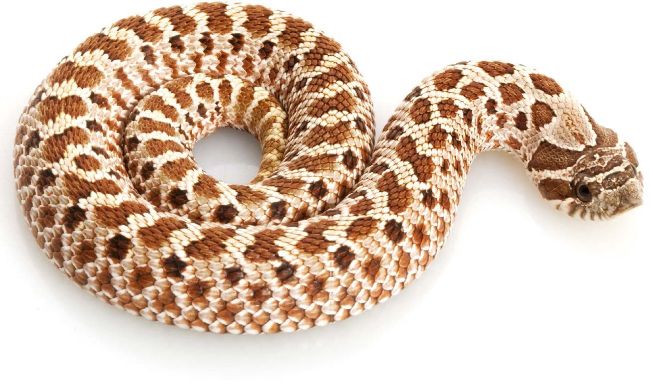New thoughts on old problems
by Dr Tariq Abou-Zahr, BVSc, Resident ECZM(Avian), MRCVS.

Hognoses are one of the groups of the snakes that can react badly to some mite treatments. A peach western hognose (Heterodon nasicus) is seen here.
As a reptile vet, there are a number of so-called “common conditions” that I see on a regular basis. They are preventable to a greater or lesser extent, yet when they do arise, they all require effective treatment if the animal is to have a healthy long future. Unfortunately, these conditions tend not get publicity these days when it comes to new treatment methods because they are so long established. They are not considered exciting new topics where significant discoveries and advances can be made. Nevertheless, progress in our understanding of how they may arise and what can be done in terms of treatment should benefit many animals, and help their owners as well.
Snake mites
This is a a topic of perennial concern to snake-keepers. Quite rightly so – these parasites are a huge problem. I very commonly see snakes that have mite infestations, and in many cases, the owners are fully aware of how the mites came to be on their animals, but not how to get on top of the problem. Usually, they will have purchased a new animal and introduced these parasites to their collection in that way.
This is not always the case though. Sometimes, owners are absolutely dumbfounded and have no idea why they suddenly woke up to discover the characteristic “poppy seed-like” specks (drowned mites) floating in their snakes’ water bowls. I think it’s very interesting to play detective in these cases, because the mites must have come from somewhere – they do not float in the atmosphere.
Snake mites (Ophionyssus natricis) can occur on most reptiles. Although they are particularly common in snakes, I have seen a couple of cases involving bearded dragons recently. In my experience, tracing the problem back, the most common source of snake mites - aside from buying animals or second-hand equipment that has them - is through bagged substrates sold via reptile outlets that also deal in livestock.
The pre-packed, sealed substrates that come straight from the manufacturer are unlikely to cause a problem, but substrates which are bagged at facilities that also have reptiles for sale can be an issue.
Vermiculite and corncob granules are the two substrates that I have seen bring mites into a collection recently. I tend to buy my own vermiculite in quantity via the horticultural trade as opposed to the reptile trade – obviously making sure it does not have added fertiliser or other unwanted ingredients, but provided you can obtain it from a reptile outlet in a pre-packed form, it should be safe.